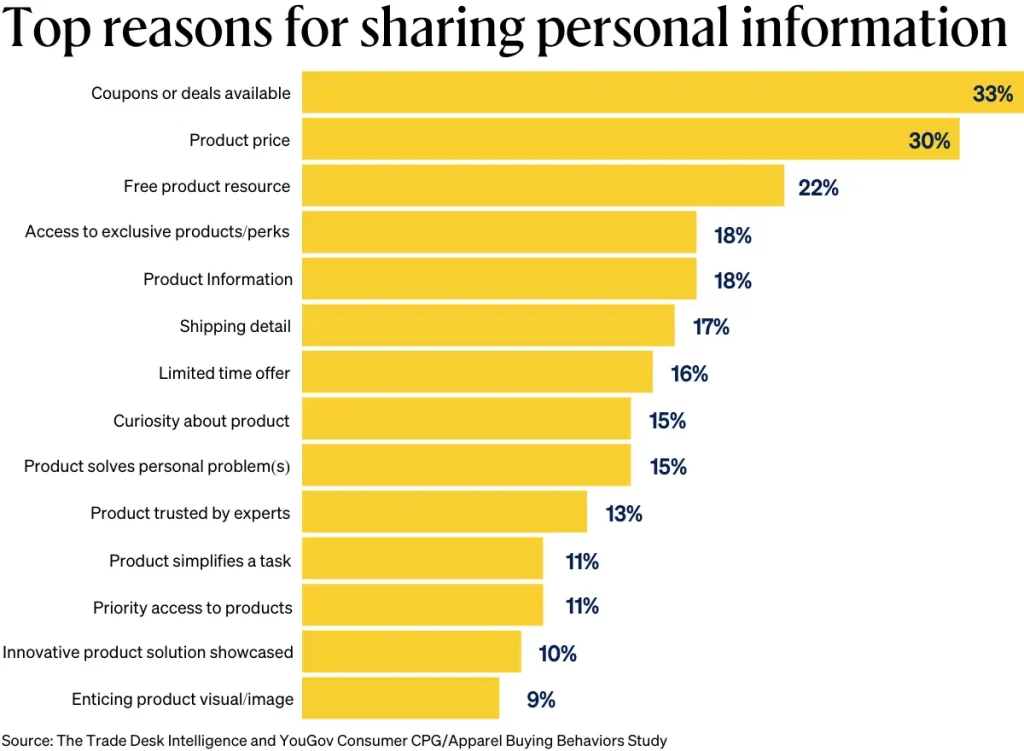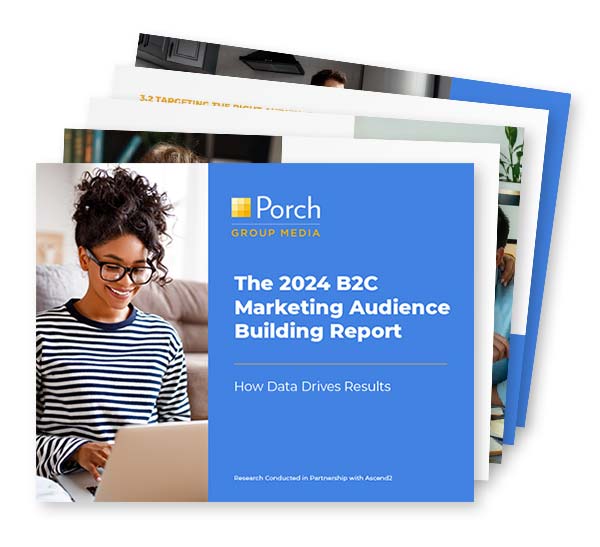“First-party data is the foundation upon which exceptional customer experiences are built. It provides a deep understanding of your customers’ needs, preferences, and behaviors, so you can deliver highly targeted and personalized messages that truly resonate.”
– Michelle Taves, VP & Group GM, Data & Marketing, Porch Group Media
First-party data has become a critical asset for businesses looking to understand and engage with their customers. In fact, 9 out of 10 marketers say first-party data is more important than ever.

What is First-Party Data?
First-party data is the information your company collects directly from your customers and prospects through your channels. This data is gathered from various touchpoints, such as website interactions, mobile apps, email subscriptions, purchase histories, and customer surveys.
Unlike third-party data, which is aggregated from external sources, first-party data is unique to your business and directly reflects the behaviors and preferences of your audience.
4 Benefits of First-Party Data
1. Accuracy and Relevance
First-party data is generally more accurate and relevant because it comes directly from your interactions with your audience. It reflects the actual behaviors, preferences, and needs of your customers so you can personalize your marketing strategies with a higher degree of precision.
2. Enhanced Customer Trust and Privacy
With the rise of data privacy regulations like GDPR and CCPA, consumers are more concerned than ever about how their data is collected and used. When first-party data is collected with clear consent and transparency, you can build trust with your customers.
3. Cost-Effectiveness
First-party data is highly cost-effective because you already own it, which eliminates the need for how much data you need to purchase data from third-party providers. First-party data is also typically more reliable and actionable, which leads to better marketing outcomes and a higher return on investment.
4. Personalization and Customer Experience
First-party data is the foundation of personalized marketing. Using insights into customer behavior, preferences, and interactions, you can create highly customized experiences that meet the needs of each individual.
How to Encourage Customers to Share More First-Party Data
According to research by the Trade Desk Intelligence and YouGov, 74 percent of respondents surveyed say they would be willing to share personal information with brands and retailers when prompted. The top factors motivating consumers to do so include coupons and deals, product prices, and access to exclusive products and perks.

5 Ways to Collect More First-Party Data
Here are a few ways to collect and encourage consumers to share their first-party data:
1. Be Transparent About Data Usage
Consumers are more likely to share their information if they understand why you’re asking for it and how it will be used. Communicate your data collection practices, explain the benefits they’ll receive in return, and ensure your privacy policy is easy to find and understand. When your customers feel confident that their data will be handled responsibly, they’ll be more likely to provide it.
Tips:
- Include a brief explanation of your data usage next to your sign-up forms or data collection points.
- Offer a detailed, accessible privacy policy that outlines how data is collected, stored, and used.
- Regularly update customers on how their data has been used to improve their experience.
2. Offer Tangible Value in Exchange for Data
Consumers are more willing to share their data when they see a clear, immediate benefit. Whether it’s exclusive discounts, personalized recommendations, or access to premium content, offering tangible value in exchange for their information can significantly increase the likelihood of data sharing. Make sure the value proposition is clear and directly tied to the data you’re requesting.
Ideas:
- Provide a discount or special offer for customers who complete their profiles or share additional data.
- Offer personalized product recommendations based on the data they provide.
- Grant access to exclusive content, such as eBooks, webinars, or member-only events, in exchange for data.
3. Create a Seamless and Positive User Experience
The easier and more enjoyable it is for customers to interact with your brand, the more likely they are to share their data. Avoid asking for too much information upfront—start with the basics and gradually request more data as the relationship grows. Make sure data collection forms are user-friendly, mobile-optimized, and integrated smoothly into the customer journey.
Best Practices:
- Use progressive profiling to gather data over time rather than overwhelming users with lengthy forms.
- Optimize your website and forms for mobile devices to ensure a seamless experience on all platforms.
- Test your data collection process regularly to identify and remove any friction points.
4. Personalize the Experience from the Start
Demonstrate the value customers will receive by sharing their first-party data, using even the most basic information to personalize their experience immediately. For example, greet them by name in emails, personalize content to their interests, or recommend products based on their browsing behavior. When customers see how their data improves their experience, they’ll be more inclined to share additional information.
Examples:
- Use their first name in email communications and on your website.
- Display personalized product recommendations on their homepage based on their past behavior.
- Send tailored offers or content based on their preferences or purchase history.
5. Build Trust Through Security and Compliance
Consumers need to know that their data is safe with you. Highlight the security measures you have in place to protect their information and ensure your data practices comply with relevant regulations like GDPR or CCPA. By demonstrating your commitment to data security and privacy, you can alleviate concerns and build the trust necessary to encourage data sharing.
Steps:
- Display security badges and certifications on your website.
- Regularly update customers on the steps you’re taking to protect their data.
- Offer easy access to their data, allowing them to review, edit, or delete their information as they wish.
Conclusion
Data privacy is a hot topic and consumers have grown increasingly weary of divulging their personal information. Collecting first-party data requires a thoughtful and transparent approach. Offer clear value, create a seamless user experience, and build trust through transparency and security. Remember, the key is to make sure that data sharing is always a win-win proposition—one that benefits both your business and your customers.
Learn how marketers use first-party data to personalize their marketing, improve the customer experience, and more. Download the free report!
Get your first-party data in order to better reach your customers across channels and boost your marketing success. Contact us to get started!




